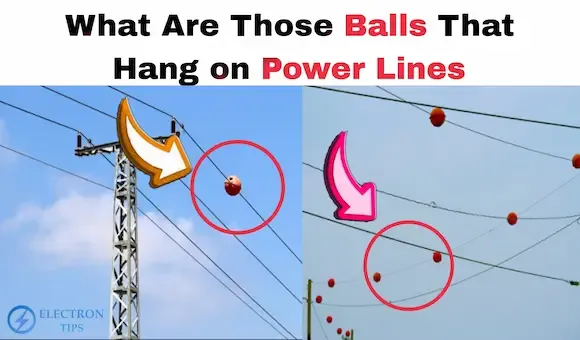 |
| What Are Those Balls That Hang on Power Lines |
Why are balls placed in electrical power transmission wires
Electricity is considered an essential part of our daily life, as it is responsible for operating most of our household and industrial appliances as well.
This enormous electrical energy is transmitted from power generation stations via electrical lines that bear high pressure and are often made of aluminum (why are aluminum wires used instead of copper? In electricity transmission, balls are often placed suspended in the electrical power transmission wires.
Why are these balls placed? What is its benefit:
We will learn the answers to these questions in this educational article , There are several reasons for placing suspended balls in electrical power transmission wires, as follows:
The first reason: improving the performance of electrical networks
Suspended balls contribute to improving the performance of electrical networks by reducing vibrations, sagging electrical wires, and dispersing wind, which improves the performance of electrical networks.
The second reason: Avoid touching electrical lines
These hanging balls stabilize the electrical lines, which helps reduce contact between them or with other objects such as trees and objects close to them. This contributes to preventing short circuits and interruption of electrical networks.
The third reason: the availability of electricity in a sustainable and stable manner
All of the above-mentioned factors lead to power outages, but with the presence of hanging balls, they ensure that the electrical wires operate continuously and provide electrical energy for homes and buildings...
a summary :
In conclusion, this was a simple topic about the reasons for placing suspended balls in electrical wires and their benefit in improving the performance of electrical networks.
